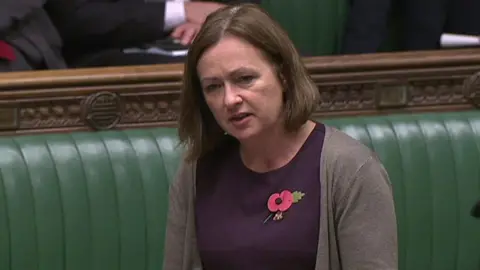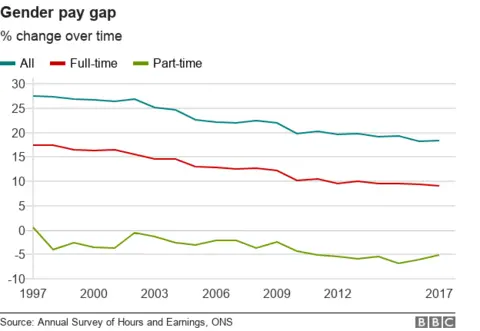Women 'must demand fair pay' to bridge gender gap
 BBC
BBCWomen must demand fair pay, an MP has said, as businesses are set to reveal details of their gender pay gap.
UK companies with 250 or more employees have to publish the data by the end of Wednesday.
It affects about 9,000 firms, which face hefty fines if they fail to report the details of any difference in the hourly rate they pay to men and women.
Ms Saville Roberts said "we know there is a gender pay gap" and employers had to be "forced to tackle it".

Some other pay gap stories you might be interested in:

A cross-party group of women MPs launched an online campaign called Pay Me Too earlier this week.
It encourages women to speak to colleagues and bosses about the need to tackle gender pay and advises them to join a union and establish a women's network.
Ms Saville Roberts, one of the group's backers, said: "This is about making sure employers know that we're watching and that we expect more than just the publication of statistics.
"We already know that there's a gender pay gap, but what we need now is for employers to be forced to tackle it and I hope the Pay Me Too campaign will encourage women across the country to speak out and demand fair pay."
The group is also asking women to take part in a survey, which they say will "help inform our work tackling the gender pay gap and fighting for equality in Britain".
Helen Bradley from the gender equality charity Chwarae Teg said that gender pay gap reporting would be a "useful tool" in helping businesses become more equal and diverse.
She said: "The gender pay gap for Wales stands at just under 15%, but is as high as 30% in some sectors like advanced materials and manufacturing and 28% in ICT.
"While women make up a lot of the workforce in Wales, they rarely make it to the very top jobs. In 2017, only 6% of chief executives or equivalent of Wales' top 100 businesses were female."


What is the gender pay gap?
It is the percentage difference between average hourly earnings for men and women.
Across the UK, men earned 18.4% more than women in April 2017, according to the Office for National Statistics.
This figure is calculated on a 1% sample of employees' jobs. It takes the median average for men and women, which is the level of pay that half of people earn more than, and half earn less than.
The gap between men and women's earnings for both full and part-time work has fallen from 27.5% in 1997 to 18.4% in 2017.
If you only look at full-time workers the pay gap drops to 9.1%. For part-time workers the pay gap favours women, who now earn 5.1% more than men.
